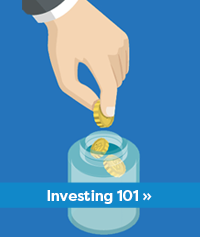Using an RESP When You Aren't Paying for School

Like many parents, when you held your sweet baby for the first time, you may have dreamt about their future. In this dream, you may have imagined them growing up and going off to college and that’s why you started saving in a Registered Education Savings Plan (RESP), a savings plan that is used to help save for the costs of your child’s post-secondary education.
Sometimes life doesn’t always turn out the way you imagined and if your child has opted to join the workforce directly after graduation or starts school and doesn’t finish, you may be left wondering “I’ve saved in a RESP for the last 18 years… what happens to that money now?” An RESP can remain open and active for 36 years, so you have some time after high school graduation before you make a final decision. Ultimately, if your child decides not to pursue post-secondary education, the account will have to be closed. Here are your options for accessing the money:
In the end, whether your child has chosen to attend a post-secondary institution and use their RESP for school or you have decided to roll the funds over into a different account, saving that money has still given them an advantage… And now that you’re no longer saving for your child’s education, consider moving that monthly allocation to a retirement fund for your own future!
Revised Jul. 5, 2021
Sometimes life doesn’t always turn out the way you imagined and if your child has opted to join the workforce directly after graduation or starts school and doesn’t finish, you may be left wondering “I’ve saved in a RESP for the last 18 years… what happens to that money now?” An RESP can remain open and active for 36 years, so you have some time after high school graduation before you make a final decision. Ultimately, if your child decides not to pursue post-secondary education, the account will have to be closed. Here are your options for accessing the money:
- Siblings - If you have more than one child and you’re saving in a family plan, the money can be transferred to a sibling, without penalty. If you choose this option, one beneficiary can’t receive more than the maximum $7,200 in grant money. If the new beneficiary exceeds the maximum amount, the difference will have to be returned.
- Retirement fund – The funds can be transferred into yours or your spouse’s Registered Retirement Savings Plan, if you have contribution room. For this option, the RESP account that is being closed must be at least 10 years old or the original beneficiary must be over 21 years old. Any Government grants will have to be returned as they are meant to be used to support post-secondary education.
- Disability fund – In the instance that your child is unable to attend post-secondary education because of an impairment, you may be able to roll the funds over into a Registered Disability Savings Plan (RDSP). There are a few conditions around this so be sure your child qualifies. Since these funds will not be used to support post-secondary information, any Government grants will need to be returned.
- Withdrawal – You can choose to withdraw your contributions from an RESP at any time. When withdrawing the money for reasons other than being used for education, there are taxes and penalties that apply to any earned income. Government grants received will have to be returned as the funds are meant to be used to support post-secondary education.
In the end, whether your child has chosen to attend a post-secondary institution and use their RESP for school or you have decided to roll the funds over into a different account, saving that money has still given them an advantage… And now that you’re no longer saving for your child’s education, consider moving that monthly allocation to a retirement fund for your own future!
Revised Jul. 5, 2021







